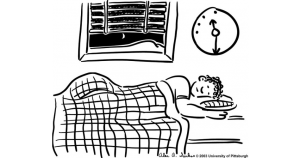See it, Say it!
Many learners we teach rely on visuals to help them interpret and process information. Today, I am going to share a resource for images and how I use them as a springboard for speaking activities in the world language classroom.
The site is supported by the University of Pittsburgh. This Digital Library contains simple, clear, black and white illustrations created in 2004. I use these pictures to support instructional tasks such as describing objects, people, situations, or events. These illustrations can be used for vocabulary or grammar practice; some even include cultural elements like food and greetings.
Here is the link:
https://digital.library.pitt.edu/collection/visuals-foreign-language-instruction
I suggest you open this link in a separate window so you can follow along and explore as you read through the blog.
Here are some examples of images you will come across:
- Fill in the blanks: dialogue bubbles
- Narration of various scenes
- Sequential/chronological scenes
- Invitations
- Pictures of the home, furniture, (eliciting topics such as chores, commands...subjunctive)
- Cityscapes
- Countryside
- Routine Activities
- Descriptions
As you can see, these images are fairly current and timeless… although I had a preschooler point to a picture of a rotary phone and ask what it was! The illustrations are appealing and are appropriate for all age groups. Best of all, these images are neutral and work for all languages!
Activities
Here are some ways I use these images in the classroom, and I am sure you will come up with a few of your own ideas!

For younger learners...
-Hand out copies and have students color in and identify vocabulary. If they do an exceptional job, consider laminating and keeping them for future use!
-Teacher-to-Student listening: Say vocabulary words and have students point to the word on paper or on an image projected on a classroom screen.
-Use the images to discuss cultural points.
-Play vocabulary bingo: For this activity, distribute 4 or 5 different pictures that share the same theme. For example, the farm, the city, the home… etc. Say a vocabulary word and then students “X” off the image if you say it. The first student to have seven Xs wins!
-Get the students moving! Post several pictures (10-15) throughout the room. Describe a picture in the target language. The first student to identify the picture wins!
Any of the above activities could work for preschool-elementary students. Some of them can work for middle school as well!
For older students…
-Put students in small groups...I prefer 2 or 3. Have 10-15 sets of 2 pictures that are similar. (Two houses, two city scenes, 2 people...etc. Give one person two pictures that are similar. Have him/her describe one of the two in the target language to his her classmate(s). The partner(s) then guess which picture his/her classmate described. Then, pass the set onto the next group and begin again. For this activity, have students base their statements on: WHO? WHAT? WHERE? WHEN? HOW? WHY?
-Discuss pictures as a group or individually based on a specific vocabulary theme or tense.
-For AP, use images as a talking point for discussion: cityscapes, forests… pollution, etc. in the target language.
-Have students ask each other questions about the picture(s). Again, encourage them to focus on the W questions.
-Hand each student or small groups of students a picture, and have him/her make up 5 questions about it, using question words. Then, pass the picture with the questions to the next student or group, and have them answer the questions orally or on paper.
-Use image(s) as a springboard for a writing sample!
-Have students create a story using the images. I find this especially helpful for practicing the past and imperfect tenses.

Suggestions...
No time to make copies for a classroom set? Project on the large screen and students can take turns.
These black and white images are easily reproducible and resizable. As mentioned, consider printing a set and laminating them for future activities. I find this especially true for the dialogue bubble scenes, because the context and settings can always vary.
Continue the learning...with Extempore!
I often upload images to Extempore and ask students to answer specific questions, or ask them to describe the picture.
If you focused on a particular theme during class, consider pulling questions to ask without providing the visual. Again, students will feel more successful, as they have already explored the topic during class time.
Have fun with this resource!
This post is courtesy of Andrea Nazelli who is the Spanish department chair and teacher at Detroit Country Day School. Want more activity ideas? See one of her previous posts: Keeping Students in the Target Language [Three Classroom Activities].


